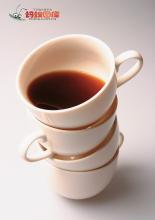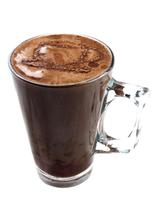The Origin and History of Coffee beans
By the 16th century, early merchants had sold coffee in Europe, thus introducing coffee as a new drink into Western customs and life. The vast majority of coffee exported to the European market comes from Alexandria and Smyrna, but with growing demand and high tariffs imposed by import and export ports, as well as increased knowledge of coffee planting, dealers and scientists are experimenting with transplanting coffee to other countries. The Dutch planted coffee trees in their overseas colonies (Batavia and Java), and the French in Martinique (in Latin America) in 1723, and then in the Antilles. Later, the British, Spaniards and Portuguese began to invade the tropical coffee-growing areas of Asia and America.
Coffee cultivation began in northern Brazil in 1727, but poor weather conditions gradually shifted the crop to other regions, first in Rio de Janeiro, and finally to Sao Paulo and Minas (circa 1800-1850). Here coffee found its ideal growing environment. Coffee cultivation grew here until it became Brazil's most important source of economy.
It was between 1740 and 1850 that coffee cultivation reached its highest popularity in Central and South America.
Although coffee was born in Africa, cultivation and household consumption were introduced relatively recently. In fact, it was the Europeans who brought coffee back to its homeland and introduced it to their colonies, where coffee flourished because of favorable land and climatic conditions. Westerners are familiar with coffee for 300 years, but in the East, coffee has been popular as a drink at all levels of society more recently. Coffee appeared earliest and most accurately in the 8th century BC, but as early as Homer's works and in many ancient Arab legends, a magical, dark, bitter, and highly stimulating drink has been recorded. Around the 10th century, Avicenna used coffee as a medicine to treat diseases. There is also a strange story from the 15th century in which it is said that a Yemeni shepherd saw a group of goats picking reddish berries from a bush. Soon the goats became restless and excited. The shepherd reported this to a monk, who cooked some berries. Then extract a bitter, strong drink Rong, which can drive away drowsiness and drowsiness.

Important Notice :
前街咖啡 FrontStreet Coffee has moved to new addredd:
FrontStreet Coffee Address: 315,Donghua East Road,GuangZhou
Tel:020 38364473
- Prev

Coffee culture around the world introduces the development of coffee.
In the 17th century * the first coffee grinder came out in London, England, and coffee was loved by Londoners. * Arabs try to control the coffee market, but in vain. The Dutch first brought coffee seedlings from Yemen and planted them in their colonies, such as Java, India, Ceylon and other countries. * A doctor in France added milk to coffee for patients to drink, resulting in the invention of milk coffee (Cof)
- Next

Introduction to the growth process of coffee beans how about Dingrui brand coffee machine
Coffee beans produced by washing account for almost 70% of the total output of coffee beans. Sometimes poor treatment of fermentation time will produce fermentation odor and special sour taste; if handled well, it can form the personalized aroma of coffee beans. At this time, the coffee beans can be sent to various places in sacks or in special containers to move the fruit in the water to the pulp removal machine and peel off the skin and pulp.
Related
- Does Rose Summer choose Blue, Green or Red? Detailed explanation of Rose Summer Coffee plots and Classification in Panamanian Jade Manor
- What is the difference between the origin, producing area, processing plant, cooperative and manor of coffee beans?
- How fine does the espresso powder fit? how to grind the espresso?
- Sca coffee roasting degree color card coffee roasting degree 8 roasting color values what do you mean?
- The practice of lattes: how to make lattes at home
- Introduction to Indonesian Fine Coffee beans-- Java Coffee producing area of Indonesian Arabica Coffee
- How much will the flavor of light and medium roasted rose summer be expressed? What baking level is rose summer suitable for?
- Introduction to the characteristics of washing, sun-drying or wet-planing coffee commonly used in Mantenin, Indonesia
- Price characteristics of Arabica Coffee Bean Starbucks introduction to Manning Coffee Bean Taste producing area Variety Manor
- What is the authentic Yega flavor? What are the flavor characteristics of the really excellent Yejasuffi coffee beans?

